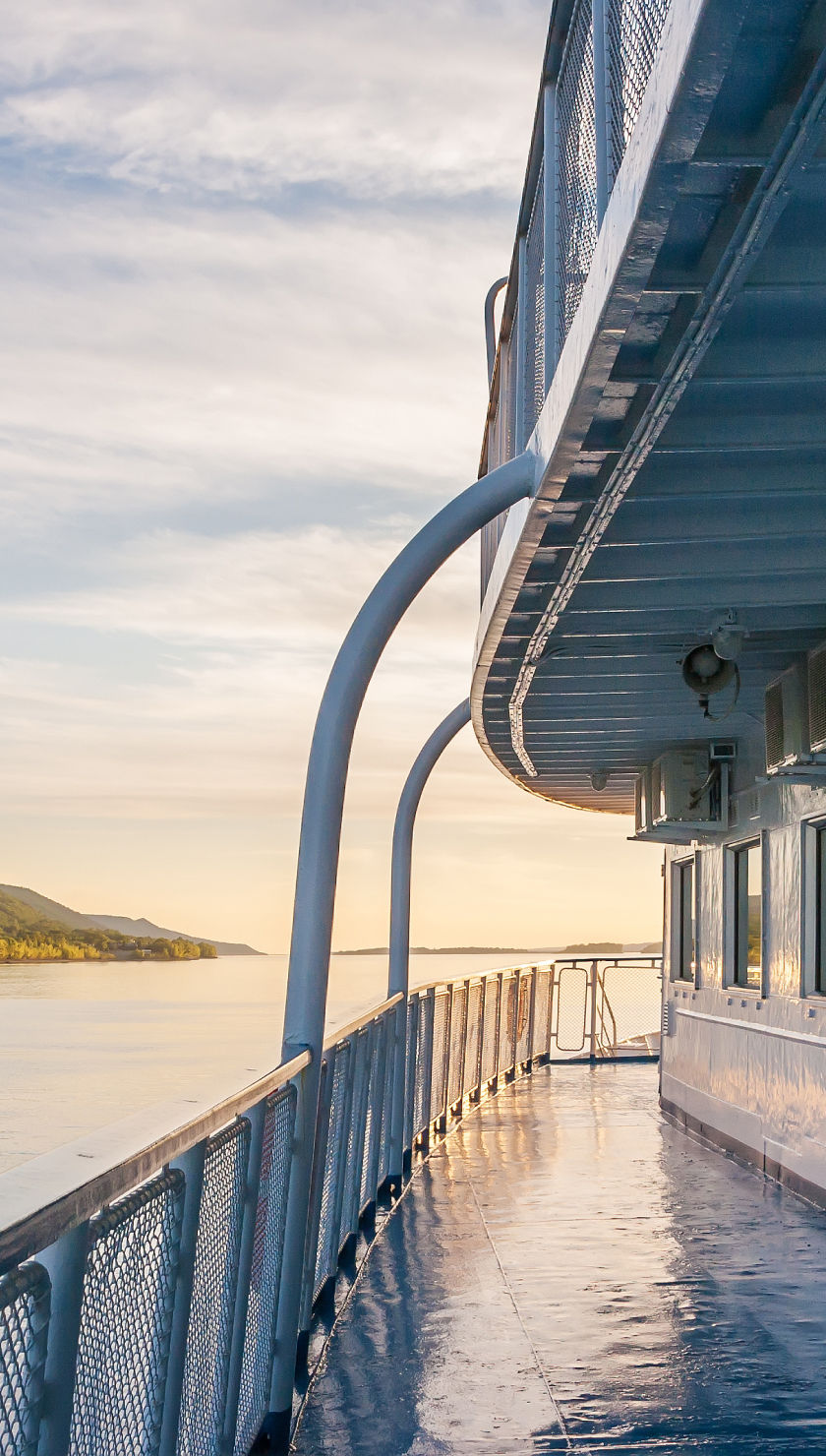Vietnam by River: A Journey Through Culture, History, and Nature
Each waterway unveils a unique portrait of Vietnamese life from the mighty Mekong Delta in the south to the Red River in the north. In the Delta, cruises wind through narrow canals shaded by nipa palms, stopping at villages like My An Hung, where guests are welcomed with traditional music and home-cooked delicacies. In the north, the Red River threads through ancient pagodas, rice terraces, and cultural hubs like Hanoi, blending history with natural beauty. Along every bend, the river brings travelers face to face with artisans, farmers, and spiritual landmarks embodying the country's heart.
Onboard, the experience is equally captivating. Small ships offer an intimate atmosphere, often hosting fewer than 50 guests, with panoramic decks, locally inspired cuisine, and curated excursions. Whether you’re sipping lotus tea while cruising past a floating market or cycling through fruit orchards at sunrise, Vietnam’s river cruises promise a journey that is both restful and revelatory—an invitation to slow down and discover the soul of a nation shaped by its rivers.
The Mekong River: Vietnam’s Aquatic Artery
The mighty Mekong River begins high in the Tibetan Plateau and journeys over 4,000 kilometers through six countries. It finds its most poetic expression in southern Vietnam. When it reaches the Mekong Delta, the river fans into nine distributaries—locally called the “Nine Dragons”—spawning a maze of channels, canals, and vibrant villages. This is where life unfolds at water level, and every bend tells a new story.
My Tho: The Gateway to the Delta
The town of My Tho is often the starting point for Mekong River cruises in Vietnam. Known for its floating markets and fruit orchards, My Tho offers a gentle introduction to delta life. As boats meander past sampans loaded with pineapples and lotus flowers, visitors can explore ancient pagodas, visit coconut candy workshops, and sample fresh tropical fruits straight from the source.
Ben Tre: Coconut Country and Quiet Canals
Often described as the “Venice of Vietnam,” Ben Tre charms travelers with its quiet, palm-fringed canals and artisan villages. The scent of fresh coconuts mingles with wood smoke from rice paper ovens. Cruising through Ben Tre means drifting under arched bamboo bridges and watching locals handcraft mats and candy in family-run workshops.
Cai Be and Vinh Long: Floating Markets and Rustic Beauty
Cai Be is home to one of the Mekong’s liveliest floating markets, where traders convene at sunrise to barter fresh produce, seafood, and household goods—all from boats. Just upstream, Vinh Long offers a more rustic experience, with stilt houses, bonsai gardens, and opportunities to dine with local families. These stops encapsulate the beauty of slow travel, where authenticity trumps spectacle.
Can Tho: The Delta’s Bustling Heart
Vietnam’s largest delta city, Can Tho, seamlessly blends tradition with modernity. Its crown jewel, the Cai Rang Floating Market, is a symphony of colors and sounds as boats laden with watermelons, noodles, and fresh flowers crowd the river. Can Tho also boasts a vibrant waterfront promenade, French colonial architecture, and culinary delights from street vendors to riverfront restaurants.
Chau Doc and Tan Chau: Where Cultures Converge
Further upriver, near the Cambodian border, lie Chau Doc and Tan Chau. These towns are cultural crossroads, home to Vietnamese, Khmer, and Cham communities. Cruises here often include visits to floating fish farms, silk-weaving villages, and the sacred Sam Mountain, with sweeping views across the borderlands.
My An Hung: A Peaceful Window into Mekong Delta Life
Tucked away in Vietnam’s lush Mekong Delta, My An Hung is a tranquil river cruise destination where traditional village life thrives along serene waterways. Known for its warm hospitality, vibrant cultural performances, and peaceful orchards, this charming hamlet offers travelers an authentic glimpse into Delta life. It is ideal for those seeking immersive, off-the-beaten-path experiences on the Mekong.
Beyond the Mekong: Coastal Rivers and Island Touchpoints
Ho Chi Minh City: Where History Meets Progress
While technically at the confluence of several minor rivers rather than the Mekong itself, Ho Chi Minh City (formerly Saigon) is often a major embarkation or disembarkation port. This bustling metropolis contrasts with the tranquil delta with its skyscrapers, motorbike-clogged streets, and cosmopolitan buzz. Many itineraries offer city tours to historical sites such as the War Remnants Museum and the French-colonial Central Post Office.
Cat Ba Island and Lan Ha Bay: Limestone Karsts and Quiet Coves
Though not a river cruise destination in the traditional sense, some extended itineraries include Cat Ba Island and Lan Ha Bay—the quieter cousin to Halong Bay. Here, karst formations rise from jade-colored waters, caves beckon with legends, and floating fishing villages dot the seascape. Inland waterways and lagoons, including serene stops like Viet Hai Village and Frog Lake, offer a unique convergence of river and sea experiences.
When to Cruise the Rivers of Vietnam
The best time for river cruises in Vietnam is during the dry season, from November to April. During these months, the weather is pleasant, the rivers are calm, and the skies are bright—perfect conditions for outdoor excursions and photography.
However, the wet season from May to October brings its beauty: lush, green landscapes, fewer crowds, and vibrant agricultural life. Rain tends to fall in short, dramatic bursts, often at night, leaving most days free for exploration.
Itineraries: Themes and Lengths to Suit Every Traveler
Short Cruises (3–5 Days): A Taste of the Delta
Ideal for first-timers or travelers on a tight schedule, short itineraries often focus on the central delta between My Tho, Ben Tre, and Can Tho. These cruises showcase floating markets, temple visits, and village walks. Expect hands-on experiences like sampan rides, traditional cooking demos, and fruit tastings in lush orchards.
Medium Cruises (6–9 Days): Deeper Delta Exploration
Medium-length cruises delve further into the cultural nuances of the region, adding stops like Chau Doc, Tan Chau, and cross-border segments into Cambodia. Guests may explore ancient temples, fish farms, and handicraft workshops. Some itineraries include an overnight stay in Ho Chi Minh City or onboard cultural performances that enrich the journey.
Long Cruises (10+ Days): Epic Journeys Across Borders
Longer cruises traverse the entire Vietnamese stretch of the Mekong and often continue into Cambodia, reaching Phnom Penh and even Siem Reap. These voyages fully immerse into Southeast Asian river life, from bustling city markets to remote river hamlets. Highlights include guided visits to UNESCO sites and national parks and culinary excursions with local chefs.
Special Interest Cruises
Culinary-themed cruises are particularly popular, featuring hands-on classes, market tours, expert-led tastings of pho, banh xeo, and Vietnamese coffee. Art and history cruises often include museum visits, calligraphy workshops, and architectural tours. Around the holidays, Christmas and New Year cruises offer a unique twist on traditional celebrations with Vietnamese flair, blending lantern-lit dinners with seasonal festivities.
Life Onboard: Tranquility, Comfort, and Connection
Ship Styles and Ambiance
Vietnam river cruises feature an array of vessels, from intimate, boutique ships with 10–20 cabins to larger vessels offering resort-style amenities. Most ships reflect Vietnamese or colonial design, with hardwood finishes, airy balconies, and open-deck lounges that invite relaxation and panoramic viewing. Onboard atmospheres are typically calm and refined, focusing on personal service and cultural immersion.
Cuisine and Wine
Dining is a highlight of any river cruise in Vietnam. Expect multi-course meals featuring fresh, local ingredients—think lemongrass chicken, river prawns, and lotus root salad—often paired with regional wines or French vintages. Vegetarian and special dietary menus are readily available, and many cruises include cooking classes or chef-led market excursions.
Excursions and Enrichment
Daily excursions are included and led by expert guides. Activities range from visiting Buddhist temples and rice fields to biking through remote villages or paddling through mangrove forests. Evening programs may include traditional music, dance performances, or storytelling by local historians, adding depth to the day’s discoveries.
Who Will Love It
Vietnam river cruises appeal to couples seeking romance, solo travelers craving authenticity, and multi-generational families looking for educational adventures. Luxury travelers will appreciate the refined service and curated experiences, while culture seekers will find endless opportunities for connection and insight.
"To cruise the rivers of Vietnam is to witness a country in motion and reflection—where time slows, stories unfold, and every waterway reveals a different shade of beauty."
From the bustling floating markets of Cai Rang to the tranquil rice paddies of Vinh Long, a Vietnam river cruise is not just a trip—it’s an immersion into a nation's lifeblood. Explore the best river cruise itineraries, experiences, and vessels with LiveAboard's Vietnam River Cruises and discover why the rivers of Vietnam continue to enchant and inspire travelers from around the globe.











